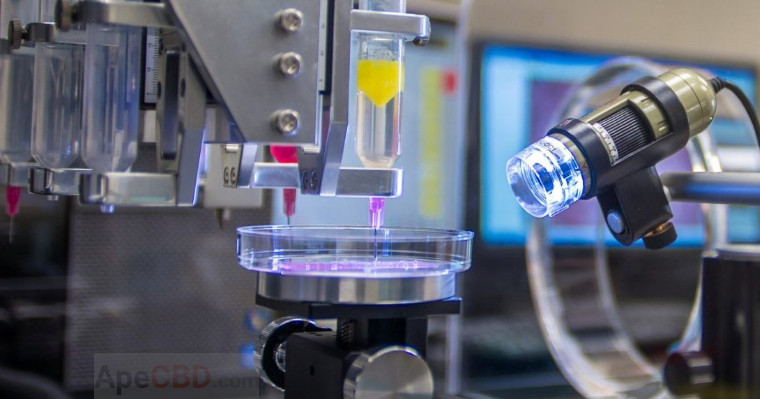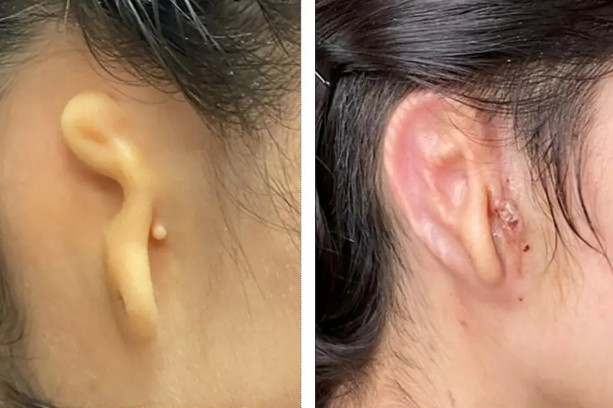
Three dimensional (3D) bioprinting is the utilization of 3D printing–like techniques to combine cells, growth factors, and/or biomaterials to fabricate biomedical parts, often with the aim of imitating natural tissue characteristics. Currently, bioprinting can be used to print tissue and organ models to help research drugs and potential treatments. Nonetheless, translation of bioprinted living cellular constructs into clinical application is met with several issues due to the complexity and cell number needed to create functional organs. However, innovations span from bioprinting of extracellular matrix to mixing cells with hydrogels deposited layer by layer to produce the desired tissue. In addition, 3D bioprinting has begun to incorporate the printing of scaffolds. These scaffolds can be used to regenerate joints and ligaments.
Research programme to bioprint ear and noses launched
The Scar Free Foundation has launched a £2.5 million plus research programme that aims to revolutionise surgeons’ ability to reconstruct nose and ear cartilage in patients affected by facial difference. If successful, it could be used in the future to treat people born without body parts or who have facial scarring because of burns, trauma or cancer. The programme will also examine the impact of facial scarring on mental health by analysing data from the world’s largest cohort of people living with this type of visible difference.
Patients living with loss of ears/noses have told researchers that existing plastic prostheses didn’t feel ‘part of them’ and would prefer that their own tissue is used for reconstruction. This programme will address this problem by creating a custom ‘cartilage’ scaffold which the patient’s own stem cells grow onto, to avoid the need to take cartilage from elsewhere in the body (which would otherwise lead to painful surgery and further scarring).
The research is being led by Prof Iain Whitaker, the Professor of Plastic Surgery at Swansea University Medical School, and NHS Consultant at the Welsh Centre for Burns and Plastic Surgery.
3D-bioprinted ear implanted in microtia clinical trial patient
A 20-year-old woman who was born with a small and misshapen right ear has received a 3-D printed ear implant made from her own cells. The patient, known only as Alexa from Mexico, was born with microtia, which is a rare birth defect that causes the external part of the ear to be small and misshapen and can also affect hearing. The trial was funded by 3DBio Therapeutics.
The implant, called the AuriNovo implant, is made from a 3D-bioprinted scaffold, designed to match the patient’s other ear. The scaffold is composed of a hydrogel (a water-containing gel) filled with collagen, the most common protein in the human body. Cartilage cells from an individual patient are added to this scaffold.
The implanted ear is supposed to mature over time, developing the natural look and feel, including elasticity, of a regular ear.

Dr Arturo Bonilla, a paediatric ear reconstructive surgeon who led the first procedure, says the new implant method is less invasive than the rib-cartilage procedure, and more flexible than the plastic ear.
“My hope is that AuriNovo will one day become the standard of care, replacing the current surgical methods for ear reconstruction,” says Bonilla.
Dr Daniel Cohen, CEO and co-founder of 3DBio, says the method marks “a truly historic moment for patients with microtia and, more broadly, for the regenerative medicine field as we are beginning to demonstrate the real-world application of next-generation tissue-engineering technology.
“We believe that the microtia clinical trial can provide us not only with robust evidence about the value of this innovative product and the positive impact it can have for microtia patients, but also demonstrate the potential for the technology to provide living tissue implants in other therapeutic areas in the future.”

